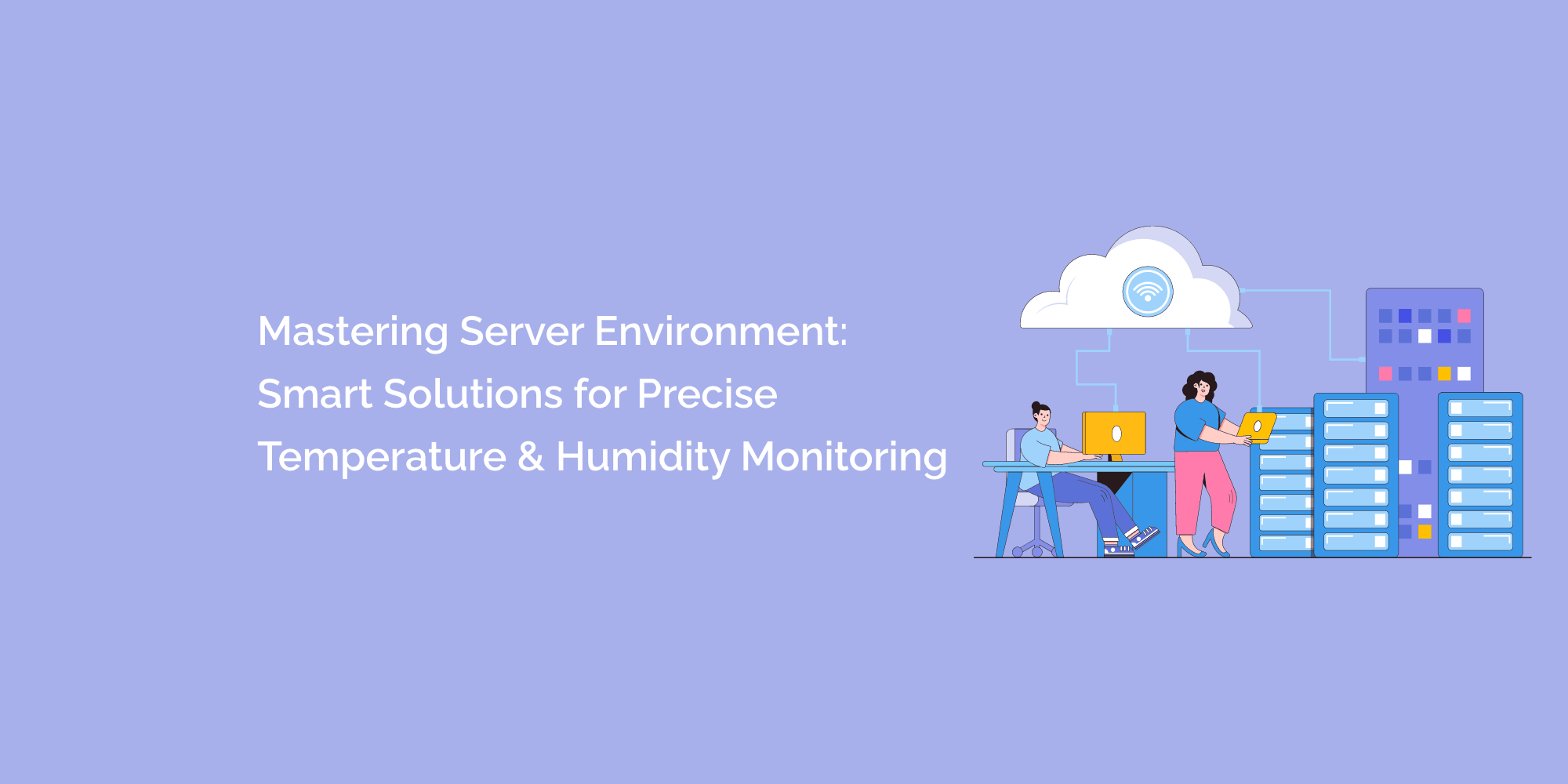In the realm of digital infrastructure, servers serve as the backbone of our connected world, handling vast amounts of data and applications. The performance, reliability, and longevity of servers are essential for businesses, organizations, and individuals alike. Among the myriad factors influencing server health, temperature and humidity control stand out as crucial components. Optimal temperature and humidity levels are essential for ensuring servers operate efficiently and consistently. Smart technology has revolutionized server environment management, offering advanced solutions that provide precise temperature and humidity monitoring, remote accessibility, automation, and real-time insights. In this in-depth guide, we delve into the world of smart solutions for mastering the server environment, highlighting their significance, benefits, integration methods, and the limitless possibilities they bring to the forefront.
Understanding the Importance of Temperature and Humidity in Server Environments
Maintaining precise environmental conditions within server rooms or data centers is paramount for the seamless operation of servers.
-
Heat Management
Servers generate heat during operation, and excessive heat can lead to reduced performance, hardware degradation, and even system failures.
-
Optimal Temperature Range
Consistently maintaining servers within an optimal temperature range prevents overheating, reduces the risk of thermal throttling, and ensures steady performance.
-
Role of Humidity
Both high and low humidity levels can adversely affect server performance. High humidity can lead to condensation, while low humidity can cause static electricity buildup, leading to component failure.
-
Component Stress
Temperature and humidity fluctuations cause components to expand and contract, stressing solder joints and other parts, which can ultimately result in hardware failure.
The Evolution of Smart Solutions for Server Environment Control
Traditional methods of climate control, such as air conditioning and ventilation, have their limitations. Smart technology has introduced a new era of precise and proactive server environment management.
-
Real-Time Monitoring
Smart solutions offer real-time monitoring of temperature and humidity levels within server environments, enabling immediate response to fluctuations.
-
Remote Accessibility
These systems allow administrators to monitor and adjust conditions remotely via mobile apps or web interfaces, enhancing accessibility and convenience.
-
Alerts and Notifications
Smart solutions send alerts and notifications when conditions deviate from preset thresholds, enabling swift proactive interventions.
-
Automation and Integration
Integration with automation systems enables automatic adjustments to cooling systems, heating, ventilation, and other environmental controls based on sensor data.
-
Data Logging and Analysis
Many smart solutions offer data logging and analysis features, providing insights into environmental trends and enabling data-driven optimization.
Advantages of Smart Solutions for Precise Temperature and Humidity Monitoring
Incorporating smart solutions into server environments offers a multitude of advantages that significantly impact performance, efficiency, and management.
-
Enhanced Server Performance
By maintaining optimal temperature and humidity levels, you ensure consistent server performance and reduce the risk of overheating-related slowdowns.
-
Mitigation of Downtime
Real-time monitoring and proactive alerts empower administrators to address issues before they escalate, minimizing unexpected downtime due to hardware failures.
-
Energy Efficiency
Smart solutions optimize cooling and heating systems based on real-time data, ensuring efficient operation and reducing energy consumption.
-
Extended Equipment Lifespan
Servers operating within recommended environmental conditions experience less wear and tear, resulting in extended equipment lifespans and reduced replacement costs.
-
Data Protection
Optimal environmental conditions minimize the risk of data loss due to hardware failures resulting from temperature and humidity-related issues.
-
Simplified Management
Remote accessibility and automation simplify climate control management, reducing the need for manual adjustments and interventions.
-
Data-Driven Optimization
Insights gained from data logging and analysis enable administrators to fine-tune cooling and heating strategies for optimal efficiency.
Methods for Integrating Smart Solutions into Server Environments
Strategic integration of smart solutions into server environments is essential to ensure seamless operation and maximize benefits.
-
Sensor Placement
Position temperature and humidity sensors strategically to capture accurate readings representative of the overall environment, including areas prone to fluctuations.
-
Threshold Settings
Configure threshold settings for alerts based on acceptable temperature and humidity ranges. Customize alerts to receive notifications for critical conditions.
-
Integration with Automation Systems
Integrate smart solutions with existing automation and control systems to enable automatic adjustments and responses based on sensor data.
-
Remote Access and Control
Install the necessary applications or access web interfaces to enable remote monitoring, adjustments, and response actions.
The Future of Smart Solutions for Server Environment Mastery
The future holds limitless possibilities for further advancement in smart solutions for mastering the server environment.
-
AI-Driven Predictive Analytics
Integration with artificial intelligence will enable advanced analytics that predict potential temperature and humidity issues, allowing administrators to take preemptive action.
-
Dynamic Cooling Systems
Cooling systems could become even smarter, adjusting airflow and cooling levels based on real-time data to optimize efficiency.
-
Enhanced IoT Integration
Integration with the Internet of Things (IoT) will expand the capabilities of smart solutions, creating a holistic ecosystem of connected devices.
Conclusion
In the age of rapid technological advancement, the optimal management of server environments plays an indispensable role in ensuring the efficiency, reliability, and longevity of servers. Smart solutions empower administrators to monitor, control, and optimize temperature and humidity levels with unprecedented precision. By incorporating these solutions, you become the guardian of your server environment, maximizing server performance, mitigating downtime, and enhancing data protection. The future of smart solutions for server environment mastery holds endless potential, promising even more sophisticated solutions that will redefine the landscape of server management. As you navigate the complexities of the digital world, the integration of smart solutions becomes your toolkit for creating a resilient and thriving server environment that stands at the forefront of technology.








